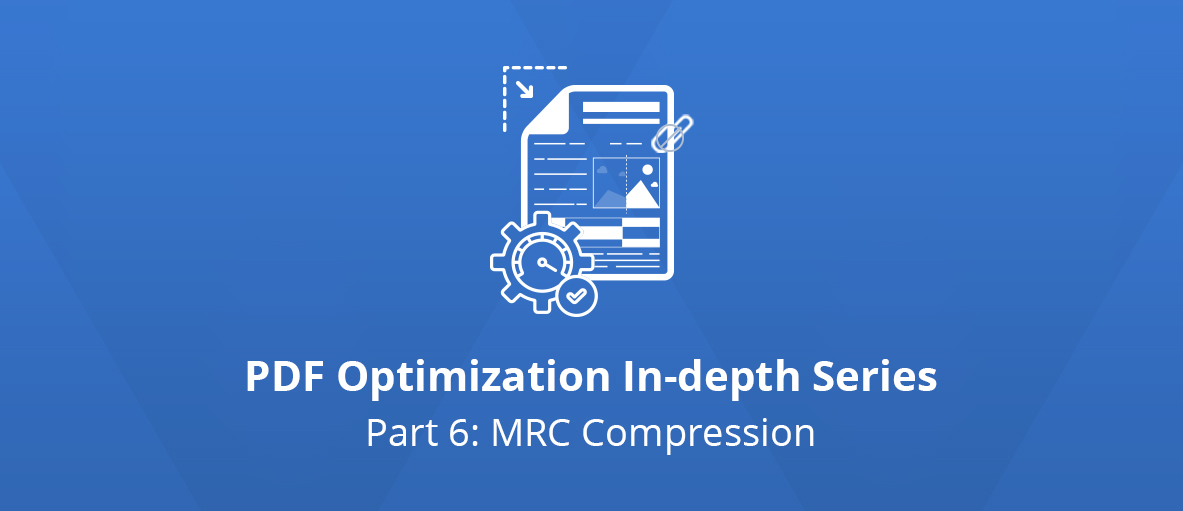Previously in our PDF Optimization In-depth Series:
- 1. Introduction to the Optimization of Existing PDF files: Methods
- 2. Lossless Methods: Optimization of Document Content
- 3. Lossless Methods: Compression of Streams and Fonts
- 4. Methods with Losses: JPEG 2000 and JBIG2
- 5. Methods with losses: resizing, color detection, and other techniques
MRC compression in PDF documents is highly efficient in file size reduction without visible degradation of document rendering.
MRC, also known as hyper-compression, is an image compression benefiting from image segmentation methods. It is particularly useful for images containing text and continuous-tone graphics.
This method reduces the size up to 8 to 10 times compared to JPEG.
In some cases, it also improves the quality of the rendering of documents.
MRC briefly
The method combines many techniques, among which segmentation plays a key role.
The crucial point is to separate certain regions of an image into three separate images, so-called layers.
Each of these layers is subsequently altered and optimally compressed. The specification of the PDF format allows reconstructing the original document using specific rendering instructions.
Let’s describe the mentioned layers:
- The binary layer
The text and graphic elements are placed in their uniforms, like lines, flat areas, etc. This layer is ideally saved in high resolution, and it is compressed with the JBIG2 algorithm.
- The background layer
It remains from the original image once the content of the previous layer is removed. The resolution of this layer is defined by the user or by using decision algorithms. Then it is saved ideally with the JPEG 2000 compression algorithm.
- The foreground layer
It contains the colors of the binary layer, so it is, in a way, its equivalent of the chromatic channel. As for the JPEG and JPEG-2000 compressions, one can significantly reduce the resolution of this layer. It is usually compressed with the JPEG-2000 compression scheme.
